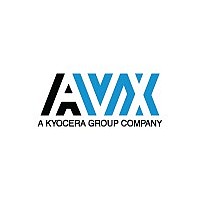KBR-3.58M-203 AVX Corporation, KBR-3.58M-203 Datasheet - Page 5

KBR-3.58M-203
Manufacturer Part Number
KBR-3.58M-203
Description
Timing Devices / Resonators / Crystals Oscillators
Manufacturer
AVX Corporation
Datasheet
1.KBR-3.58M-203.pdf
(50 pages)
AVX/Kyocera Ceramic Resonators
GENERAL DESCRIPTION
ceramic resonators covering both the kilohertz and
megahertz frequency ranges. The high quality and extensive
coverage of this product line allows optimum design of
almost any oscillating circuit.
oscillators and LC/RC oscillators in regard to accuracy but
are considerably smaller, require no adjustments, have
improved start-up times, and are low in cost.
resonance associated with their piezoelectric crystalline
structure. These materials (usually barium titanate or lead-
zirconium titanate, PZT) have large dipole movement which
causes the distortion or growth of the crystal by an applied
4
VIBRATION MODE
EXPANDING
Table I
Oscillators and Resonator Frequency Application
THICKNESS
SHEAR
THICKNESS
SURFACE
ACOUSTIC
WAVE
Figure 1: Vibration Modes vs Frequency
Ceramic Resonators
190 kHz ~ 60 MHz
SAW Resonators
46 MHz ~ 315 MHz
Oscillators
1 MHz ~ 2 GHz
Quartz Crystals
12 MHz ~ 22 MHz
AVX/Kyocera produces a broad range of high quality
Ceramic resonators stand between quartz crystal
Their oscillation is dependent upon mechanical
FREQUENCY Hz
(Hz)
1K
10k
10K100K 1M 10M 100M 1G 1 0G
20k
100k 200k
KBR-M SERIES
KBR-MY SERIES
KAR SERIES
APPLICATION
KBR-B/BK SERIES
KBR-F SERIES
KBR-MS/MSA SERIES
KBR-MKS SERIES
PBRC SERIES
CLOCK OSCILLATORS
1M
2M
10M
Figure 2: Basic Feedback Circuit
20M 100M 200M
V
G ß V
IN
V
IN
1
IN
1
1G
ATTENUATION ß
FEEDBACK
NETWORK
AMP
PHASE
PHASE
Resonator
SHIFT
SHIFT
Table II
Timing Devices
180
180
Ceramic
Crystal
Quartz
electric field. The resonance frequency depends on the
vibration mode as shown in Figure 1.
of an amplifier with a 180° phase shift and attenuator. A
negative polar output (volt) is obtained with an amplitude
equal to the gain of the amplifier times the input voltage (G
with an attenuation ratio of ß, a negative polar wave equal
to ß
greater than the initial input voltage (V
occur. This satisfies the two conditions necessary for
oscillation:
Type
LC
RC
GAIN: G
V
IN
A basic feedback circuit is shown in Figure 2. It consists
1.G
2. Phase cycle around the loop is an integral multiple of 360°.
). After the signal goes through the feedback network
(G
G V
V
ß>1
Symbol
OUT
V
IN
IN
1
) is fed back to the input. If this feedback is
Figure 3: Oscillator Circuit
Frequency Frequency
Tolerance
±0.002%
±0.5%
±2%
±1%
C1
Inverter
EXAMPLE
Inverter:
V
Rf:
C1, C2:
Resonator
CC
Ceramic
±500ppm/°C
±100ppm/°C
:
±50ppm/°C Next to Smallest
Rf
±1ppm/°C
Stability
Typical
C2
MC14069UBP
5 V.D.C.
1M ohms
100 pF
(455 kHz Resonator)
33 pF
(4.00 MHz Resonator)
Inverter
IN
Next to Largest
), oscillation will
Relative
Smallest
Largest
Size
V
DD
Fosc
Cost
High
Low
Low
Low











